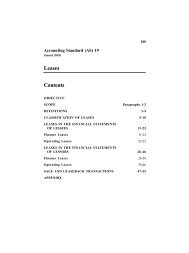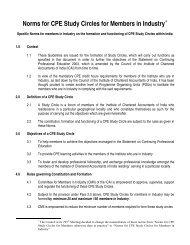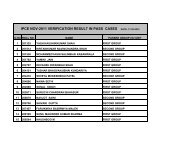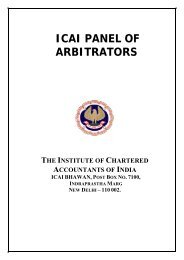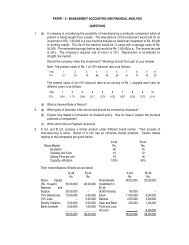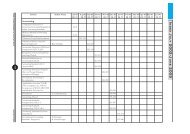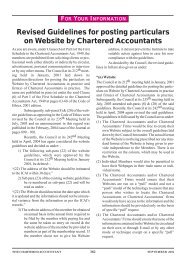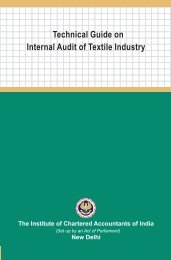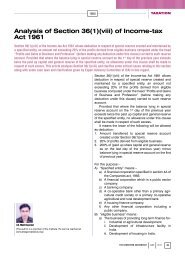The Chartered Accountant
The Chartered Accountant
The Chartered Accountant
Create successful ePaper yourself
Turn your PDF publications into a flip-book with our unique Google optimized e-Paper software.
GLOBAL PERSPECTIVE<br />
<strong>The</strong> CredIT CrIsIs of 2008:<br />
CAuses, ConsequenCes And<br />
ImplICATIons for IndIA<br />
<strong>The</strong> ripple effects of global credit crisis has hit world economy hard,<br />
triggering global recession. India is no exception to the woes of this<br />
financial meltdown as it has led to some credit squeeze and erosion of<br />
huge amounts of investor wealth. It, however, is in far more comfortable<br />
position than many other nations. This scenario offers an opportunity<br />
to India to learn from America’s mistakes and take corrective,<br />
preventive measures. This article discusses the causes and consequences<br />
of the crisis, its impact on India and the lessons that need to<br />
be learnt by the country.<br />
To understand the genesis of the current<br />
financial meltdown we need to<br />
start with the US housing market, a<br />
$22.5 trillion major economic driver larger<br />
in size than the US stock<br />
market. <strong>The</strong> US housing<br />
market witnessed an<br />
unprecedented run-up in<br />
prices from the mid 1990s<br />
until it peaked in mid 2006. 1<br />
Between 1997 and 2006,<br />
home prices increased by<br />
nearly 85% overall 2 with<br />
a per year compound rate<br />
of 12% between 2000<br />
– Professor V.G. Narayanan*<br />
and Lisa Brem**<br />
(*<strong>The</strong> author is faculty of Harvard Business<br />
School. **<strong>The</strong> author is Research<br />
Associate at Harvard Business School.<br />
<strong>The</strong>y can be reached at vnarayanan@<br />
hbs.edu)<br />
and 2005. 3 Ratios of home prices to household<br />
incomes were at an all time high and<br />
appeared unsustainable. Low interest rates<br />
made borrowing money cheap and fueled<br />
the rise in home prices. Low<br />
inflation, in turn, kept interest<br />
rates down during this period,<br />
and low unemployment allowed<br />
people to feel comfortable taking<br />
on more debt. Easy access<br />
to cheap credit during a period<br />
of very high appreciation in real<br />
estate prices meant that builders<br />
and real estate speculators<br />
made healthy profits. As a re-<br />
1 Standard Standard & Poors, Case Shiller Index Website, http://www2.standardandpoors.com/portal/site/sp/en/us/page.topic/indices_csmahp/0,0,0,0,0,0,0,0,0,2,1,0,0,0,<br />
0,0.html, excel file dated August 2008, accessed November 12, 2008.<br />
2 Report and Recommendations by the Majority Staff of the Joint Economic Committee, “<strong>The</strong> Subprime Lending Crisis,” October 2007, pp. 2 and 3.<br />
3 Ken Leon, “Industry Surveys Home Building,” Standard & Poors. July 3, 2008, p. 9.<br />
THE CHARTERED ACCOUNTANT 1007 DECEMBER 2008



